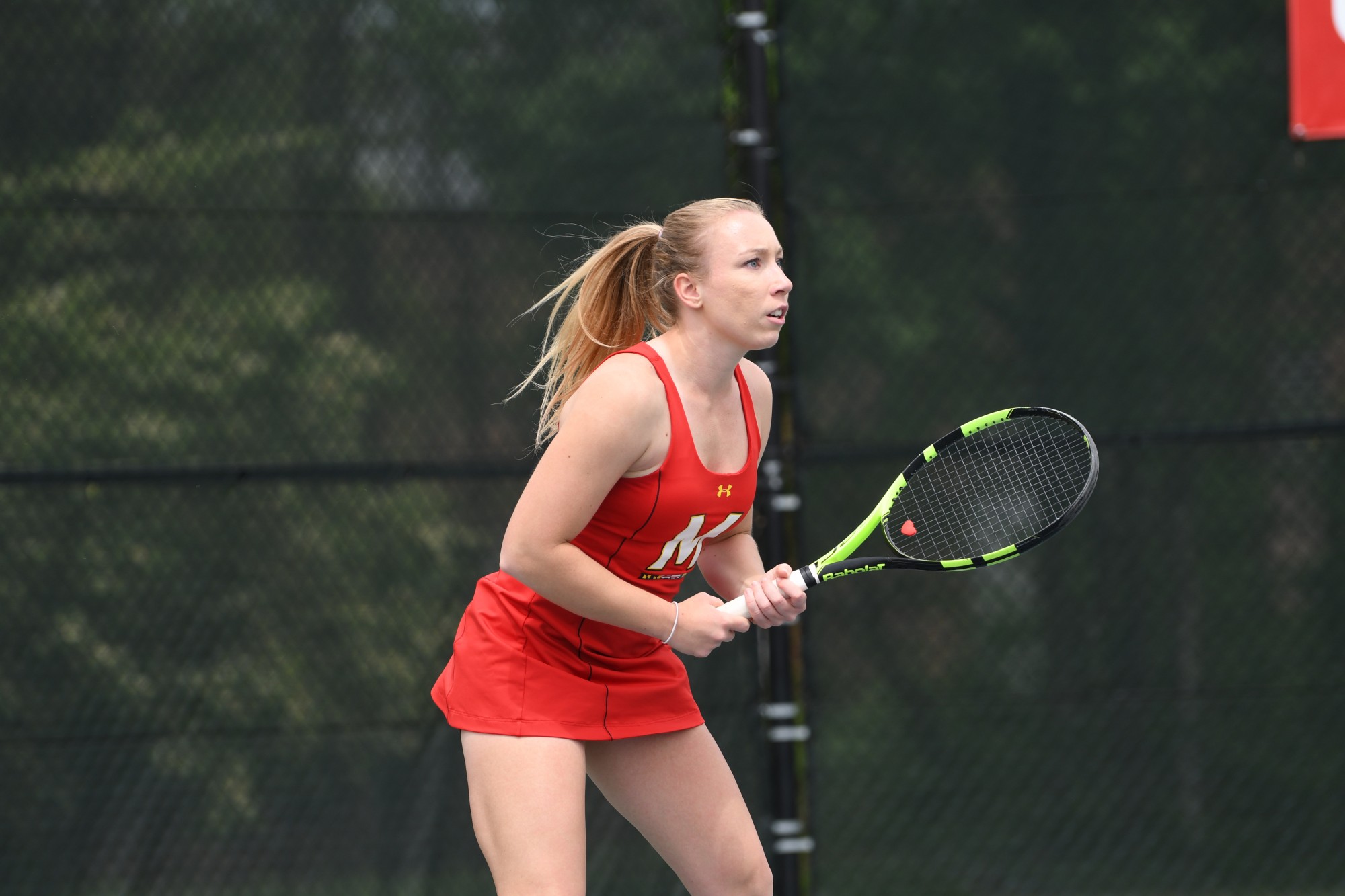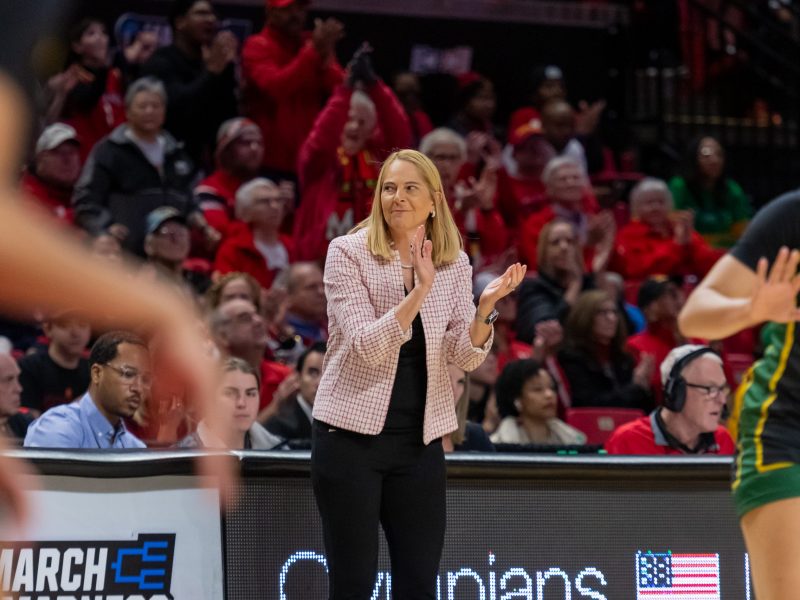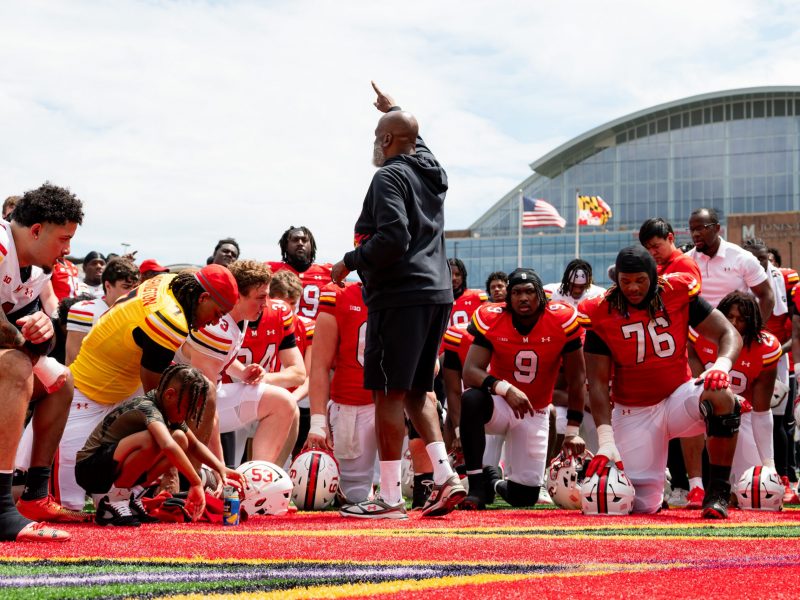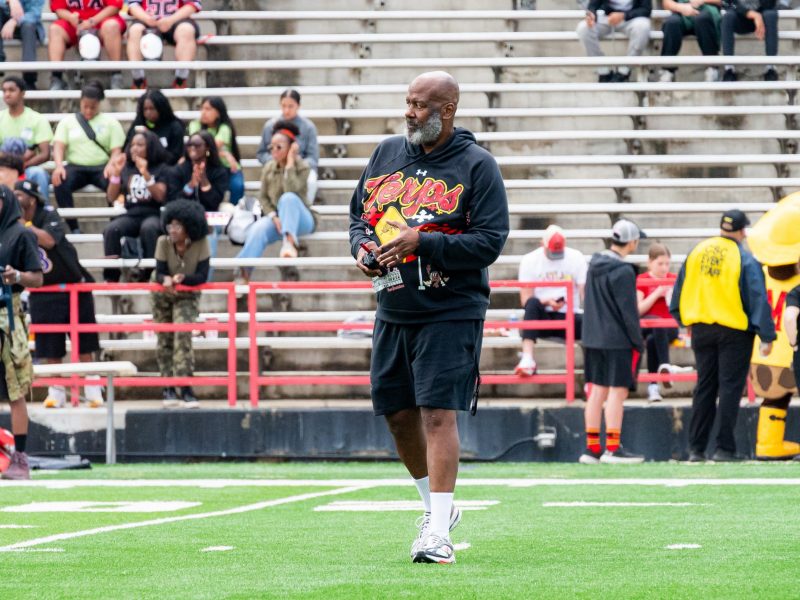The Maryland tennis team was in the midst of conditioning this past fall — 30 sprints of 100 yards. If the strides weren’t performed to coach Daria Panova’s standards, the Terps ran extra.
“None of us wanted to make each other run even more,” senior Alexandra Stanova said.
But two years ago, Stanova may not have cherished the conditioning as much as she does now.
Stanova was in a groove her sophomore year as the team’s No. 1 singles player. Then, her knee buckled when she hit a forehand against Penn State on March 21, 2015.
“Suddenly, I felt a really bad pain in my knee, and I knew I could barely stand on my leg,” Stanova said. “Until then, I didn’t know what could possibly be wrong. I thought I could run it off.”
But Stanova couldn’t serve the next point. She fell again, only this time, she didn’t get up.
Her first thought was her team. The Terps were in a rugged matchup, trailing 3-2. Stanova peered at the scoreboard and saw then-freshman Ekaterina Tour held a comfortable lead in her set. If Stanova won her match, the Terps would’ve emerged victorious.
Maryland lost to the Nittany Lions, 4-3, but the damage exceeded the loss — Stanova tore her ACL.
“My stomach just dropped,” senior Kristina Hovsepyan said. “You heard the scream, and it was just an awful feeling that came over the team.”
Stanova knew she faced a months-long rehabilitation process.
Four weeks after her surgery, Stanova’s leg was still so swollen she couldn’t recognize it. Her trainers began bending her leg, trying to add mobility, but Stanova’s knee wouldn’t cooperate.
“It took hours every day,” Stanova said. “Through crying, screaming, we were even considering getting [another] surgery.”
Once Stanova started running, she was reluctant to land on her leg. As doubt crept into her mind, she turned to her teammates for support.
Stanova lived with four of her teammates, who made a schedule to take care of her. Every night, they checked on her in her room and gave her pain medicine.
“I couldn’t even go to the bathroom on my own,” Stanova admitted.
Hovsepyan, who has lived with Stanova the past two years, drove with her to and from rehab, as Hovsepyan recovered from a dislocated thumb.
When Stanova returned to the court her junior year, she had been relegated to the No. 3 singles position.
About a year after her injury, though, Stanova was named Big Ten Athlete of the Week after regaining the No. 1 singles player role.
“She’s very determined and she’s never satisfied, which sometimes helps her and sometimes hurts her because she can’t fully enjoy when she’s playing well,” Panova said,
Stanova has played at the No. 1 position this whole season, which Panova credited in part to her leadership ability.
The coach recalled April 7’s match against Michigan State when Stanova was “definitely not playing her best tennis.”
Stanova trailed by two match points, and the Terps were in danger of losing their fourth match in five tries. They lacked energy. The tennis bubble was quiet. Then, Stanova let out a scream.
Panova said it catalyzed the Maryland comeback.
“Whenever she starts fighting, you hear her scream,” Panova said. “She has this very distinct, loud scream, and it motivates everyone around her to go out and fight.”
For Stanova, this season has been special. The Terps’ 11-1 start was the best in program history, and the team is 16-5 entering the Big Ten Championship at Illinois on Friday.
After facing adversity, Stanova isn’t taking these moments for granted.
“She thinks of more than just herself every time she steps on the court,” Panova said. “Sometimes it adds pressure, sometimes it motivates her more. She’s probably the most caring person on our team.”



